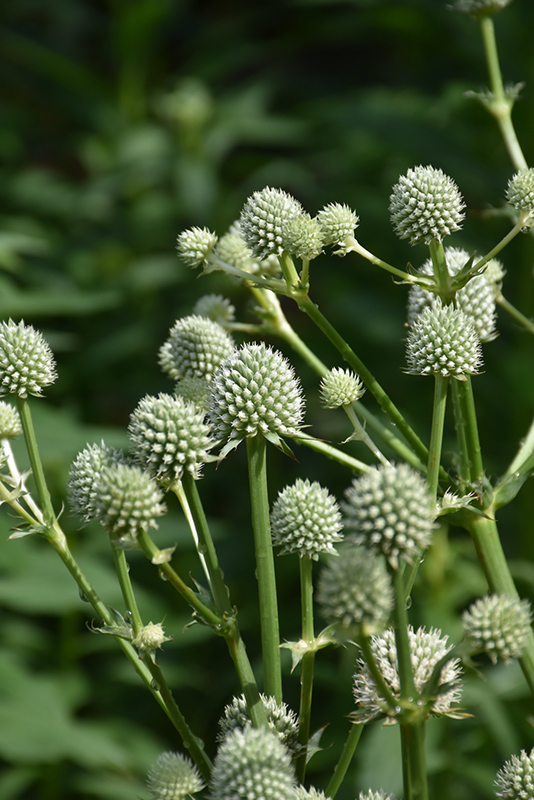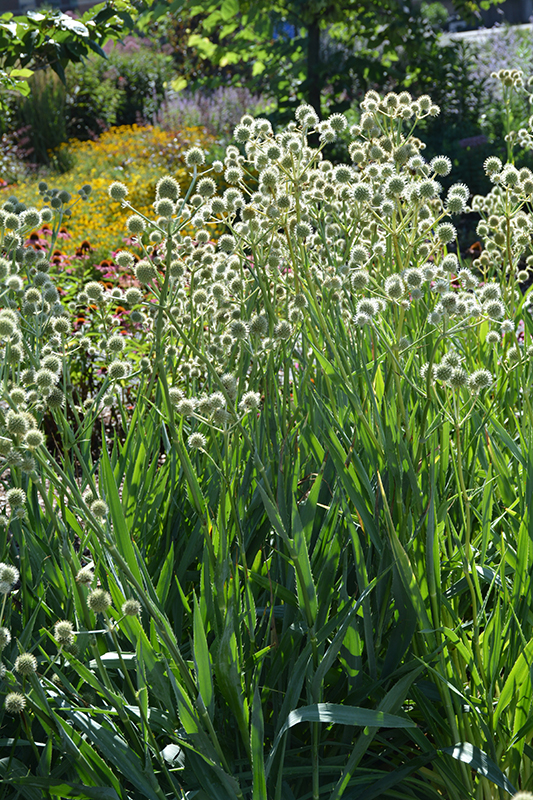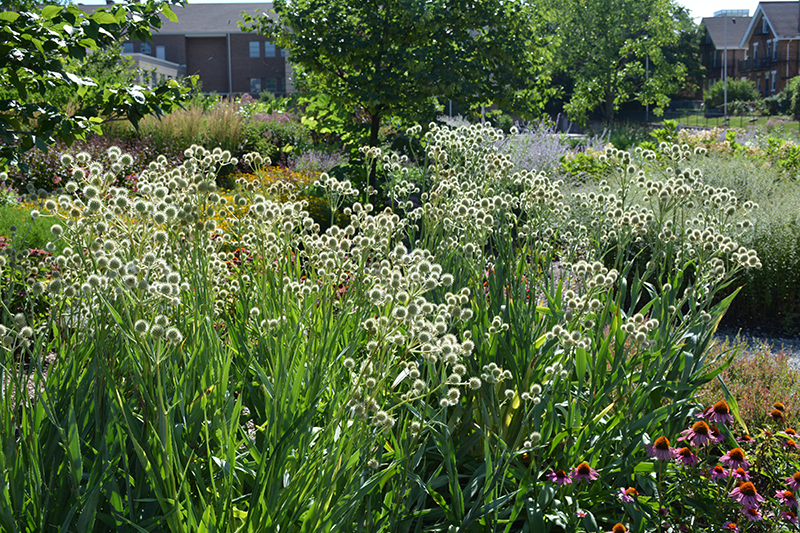Plant Finder
Find the perfect plant for your garden.
Plant Height: 24 inches
Flower Height: 4 feet
Spread: 3 feet
Sunlight:
![]()
Hardiness Zone: 3a
Other Names: Button Snake-root
Description:
A distinctive, native tallgrass prairie plant with attractive yucca-like foliage that is upright and toothed; tall stalks of showy greenish-white flower heads in summer that fade to brown in fall; tolerates hot dry sites; great in mass plantings
Ornamental Features
Rattlesnake Master features showy clusters of white ball-shaped flowers with light green overtones at the ends of the stems from early to late summer. The flowers are excellent for cutting. Its attractive serrated sword-like leaves remain bluish-green in color throughout the season.
Landscape Attributes
Rattlesnake Master is an herbaceous perennial with a mounded form. Its relatively fine texture sets it apart from other garden plants with less refined foliage.
This plant will require occasional maintenance and upkeep, and is best cleaned up in early spring before it resumes active growth for the season. It is a good choice for attracting bees and butterflies to your yard, but is not particularly attractive to deer who tend to leave it alone in favor of tastier treats. Gardeners should be aware of the following characteristic(s) that may warrant special consideration;
- Self-Seeding
Rattlesnake Master is recommended for the following landscape applications;
- Mass Planting
- Rock/Alpine Gardens
- Border Edging
- General Garden Use
- Container Planting
Planting & Growing
Rattlesnake Master will grow to be about 24 inches tall at maturity extending to 4 feet tall with the flowers, with a spread of 3 feet. Its foliage tends to remain dense right to the ground, not requiring facer plants in front. It grows at a medium rate, and under ideal conditions can be expected to live for approximately 10 years. As an herbaceous perennial, this plant will usually die back to the crown each winter, and will regrow from the base each spring. Be careful not to disturb the crown in late winter when it may not be readily seen!
This plant should only be grown in full sunlight. It prefers dry to average moisture levels with very well-drained soil, and will often die in standing water. It is considered to be drought-tolerant, and thus makes an ideal choice for a low-water garden or xeriscape application. It is not particular as to soil pH, but grows best in poor soils, and is able to handle environmental salt. It is highly tolerant of urban pollution and will even thrive in inner city environments. This species is native to parts of North America..
Rattlesnake Master is a fine choice for the garden, but it is also a good selection for planting in outdoor pots and containers. Because of its height, it is often used as a 'thriller' in the 'spiller-thriller-filler' container combination; plant it near the center of the pot, surrounded by smaller plants and those that spill over the edges. It is even sizeable enough that it can be grown alone in a suitable container. Note that when growing plants in outdoor containers and baskets, they may require more frequent waterings than they would in the yard or garden. Be aware that in our climate, most plants cannot be expected to survive the winter if left in containers outdoors, and this plant is no exception. Contact our experts for more information on how to protect it over the winter months.
A NetPS Plant Finder tool




